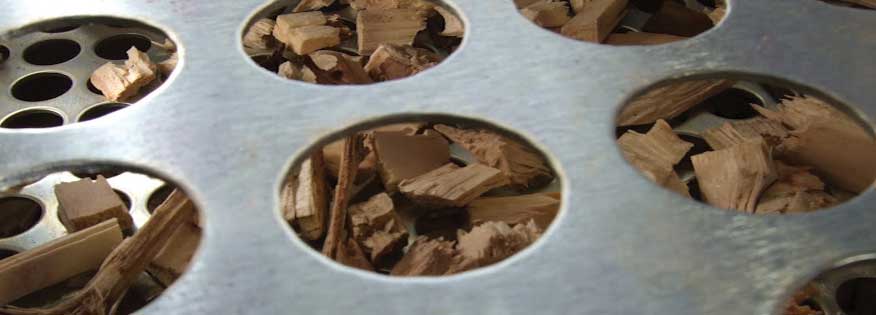The two most important elements of wood fuel are; Moisture Content and Particle Size Distribution.
Moisture Content Testing
The energy value of wood when burned as a fuel is overwhelmingly determined by its moisture content. Half of the weight of a typical freshly felled tree is water.
Wood-burning appliances such as biomass boilers and stoves are optimised to burn fuel at a specific range of moisture content. Using fuel outside of these parameters can lead to inefficient combustion, cause damage to the appliance, cause smoke and tar, as well as releasing environmentally harmful gasses.
The definitive method of determining moisture content is using an oven-dry method. The BS EN ISO standards require a temperature-controlled oven to evaporate all of the water from the sample and determine the moisture content on a wet basis.
We test woodchips to BS EN ISO 17225 and issue a certificate confirming the results and to which standard it refers.
Particle Size Distribution Testing for Wood Chips
Particle Size Distribution (PSD) is tested to standard BS EN ISO 17225 for wood chips. Testing is done using a horizontal oscillating sieve shaker with circular holes, along with a laboratory weighing scale. Following testing, we provide you with a test certificate showing the distribution of the sample and which, if any, classes it meets.

Chemical Testing
We also provide chemical testing services to test for trace elements found in the treatment of timber. We recommend using this testing service if you are using any fuel from reclaimed or waste wood sources.
Cost of Laboratory Testing
We offer a range of testing services at competitive prices from as little as £16. Please contact us for a quote to suit your testing requirements.
A Note About Pin Meters
The common method of moisture content (MC) determination within the wood fuel industry is to use an electrical pin meter. These do not measure the MC directly but rather they measure electrical resistance. They use internal calibration curves to determine the MC based on resistance. After many, many months of testing various pin meters against the oven dry laboratory standard for MC, we have concluded that these can only be used as a guide to measuring moisture content, and should not be used as a tool to determine moisture content for the sale of wood fuel. They may work well in a laboratory setting but in real life, the readings aren't accurate, reliable, or repeatable.
